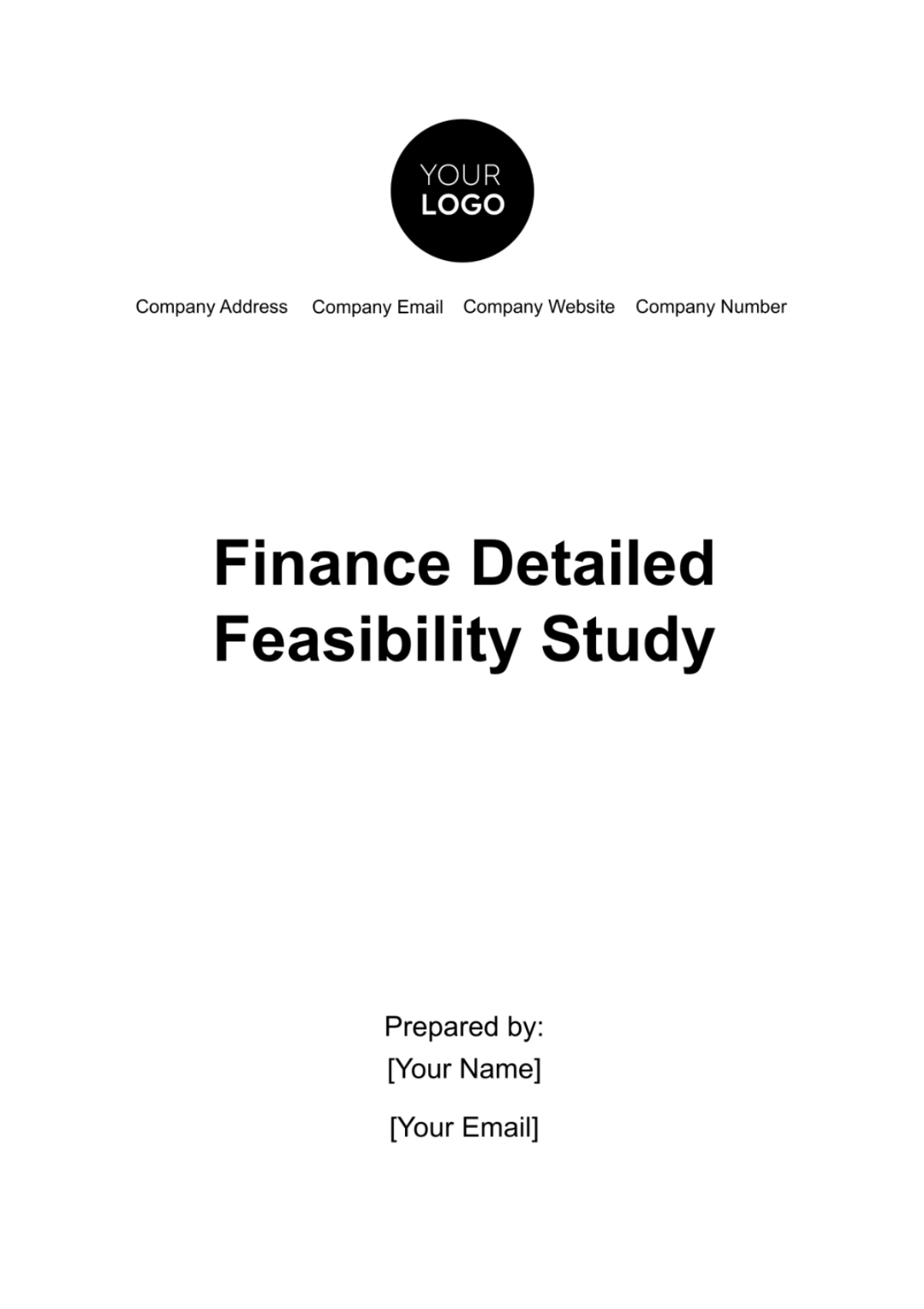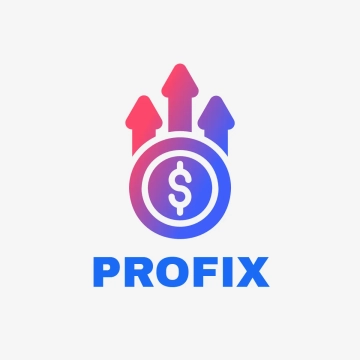Free Finance Detailed Feasibility Study

I. Introduction
A. Objectives:
The main objectives of this feasibility study are to assess the financial feasibility of the company’s project, identify potential challenges, and provide decision-makers with insights into the project's viability. The study will serve as a crucial tool for investors, lenders, and other stakeholders in making informed decisions.
B. Importance of Financial Analysis:
Given the capital-intensive nature of the project, a thorough financial analysis is imperative to ensure that the investment aligns with the financial goals of stakeholders. This feasibility study will provide an understanding of the project's financial implications, enabling stakeholders to make well-informed decisions.
II. Executive Summary
A. Overview:
The proposed project involves the establishment of a [solar power generation plant] with a capacity of [50 megawatts]. The primary objective is to leverage renewable energy sources to meet the growing demand for electricity in the region. The feasibility study examines the financial viability of the project, considering key factors such as market conditions, technical feasibility, operational plan, and financial projections.
B. Key Financial Findings:
Preliminary financial analysis indicates a favorable return on investment with an estimated payback period of [5 years]. The internal rate of return (IRR) is projected at [12%], exceeding the industry benchmark. Revenue projections are based on conservative assumptions, taking into account market trends and potential risks.
III. Market Analysis
A. Market Conditions and Trends:
The renewable energy market is experiencing robust growth, driven by increasing environmental concerns and government incentives for clean energy projects. Market trends indicate a rising demand for solar power, supported by advancements in technology and decreasing costs of solar panels.
B. Demand Analysis:
The region targeted for the project exhibits a growing demand for electricity, outpacing the current supply. The project aims to capitalize on this demand by providing a reliable and sustainable source of power.
C. Competitive Market:
The competitive analysis reveals a relatively low market saturation in the solar power sector within the region. However, existing players have established a foothold, emphasizing the importance of strategic positioning and differentiation for the success of the proposed project.
D. Market Risks and Opportunities:
Potential risks include regulatory changes, fluctuations in solar panel prices, and unforeseen technical challenges. Opportunities arise from government incentives, increasing public awareness of environmental issues, and the potential for long-term revenue stability through power purchase agreements.
IV. Operational Plan
A. Project Execution Plan:
The project will be executed in multiple phases, including site preparation, installation of solar panels, and integration with the local power grid. A project management team will oversee the execution, ensuring adherence to timelines and quality standards. Key milestones include obtaining necessary permits, completing construction, and initiating power generation.
B. Resource Allocation:
Human resources will include skilled technicians, engineers, and project managers. Necessary equipment and materials will be sourced from reputable suppliers. A maintenance team will be established to ensure the continuous operation of the solar power plant.
C. Operational Processes:
The solar power plant will utilize photovoltaic technology to convert sunlight into electricity. Regular monitoring and maintenance will be conducted to optimize energy output. Contingency plans will be in place to address potential technical issues and minimize downtime.
D. Milestones and Timelines:
The project timeline is estimated at [18 months], with major milestones including securing permits within the first three months, completing construction in [12 months], and initiating power generation by the 18th month.
V. Cost Estimates
A. Initial Investment:
Land Acquisition: | $[1,000,000] |
Construction: | |
Solar Panels and Equipment: | |
Licensing and Permits: | |
Contingency: |
B. Operating Costs (Annual):
Labor: | $[250,000] |
Maintenance: | |
Utilities: | |
Insurance: | |
Other: |
VI. Revenue Projections
A. Sales Forecasts:
Revenue projections are based on the assumption of selling electricity to the local power grid at a rate of $[50] per kilowatt-hour. Sales are expected to reach [200,000] megawatt-hours in the first year, with a conservative annual growth rate of [5%].
B. Pricing Strategies:
The pricing strategy is designed to remain competitive while ensuring profitability. Long-term power purchase agreements with the local utility will be pursued to provide revenue stability.
C. Market Penetration and Growth:
The solar power plant aims to capture [10%] of the local market share within the first three years, with future expansion opportunities considered based on market demand.
D. Assumptions Underlying Revenue Projections:
Projections are based on stable market conditions, consistent regulatory support, and the successful execution of the operational plan. Sensitivity analysis will be conducted to assess the impact of potential deviations from these assumptions.
VII. Financial Statements
A. Income Statements:
Year | Revenue | Cost of Goods Sold | Gross Profit | Operating Expenses | Net Income |
1 | [$90,000] | [$95,000] | [$85,000] | [$50,000] | [$75,000] |
2 | |||||
3 | |||||
4 | |||||
5 |
B. Balance Sheets:
Year | Assets | Liabilities | Equity |
1 | [$85,000] | [$50,000] | [$75,000] |
2 | |||
3 | |||
4 | |||
5 |
C. Cash Flow Statements:
Year | Operating Activities | Investing Activities | Net Cash Flow |
1 | [$95,000] | [$85,000] | [$95,000] |
2 | |||
3 | |||
4 | |||
5 |
VIII. Risk Analysis
A. Identification of Financial Risks:
The identification of financial risks encompasses a thorough examination of potential challenges that could impact the project's financial performance. Regulatory changes pose a significant risk, as alterations in government policies, subsidies, or power purchase agreements may affect revenue streams. Technology risks include the potential for unforeseen technical challenges, such as equipment failures or efficiency issues, which could lead to increased maintenance costs and decreased energy production.
B. Probability and Impact Assessment:
A detailed analysis assigns probabilities and assesses the potential impact of identified risks. Regulatory changes are deemed moderately probable but carry a high impact on revenue stability. Technology risks, while less probable, could have a severe impact on operational efficiency and long-term profitability. Market risks, including fluctuations in energy prices and demand, are considered moderately probable with a moderate impact on revenue projections.
C. Risk Mitigation Strategies:
To mitigate regulatory risks, the project will maintain active engagement with relevant government bodies, staying informed about potential policy changes and proactively adjusting strategies. Technology risks will be addressed through continuous monitoring and maintenance protocols, with contingency plans in place for rapid response to technical challenges. Market risks will be managed through the exploration of long-term power purchase agreements with local utilities, providing revenue stability in the face of energy price fluctuations.
IX. Funding Requirements
A. Capital Structure:
The proposed capital structure is designed to balance financial leverage while maintaining a reasonable level of risk. A mix of equity and debt financing is recommended, with an initial equity investment of [20]% and the remaining [20]% to be raised through debt financing. This structure aims to optimize returns for equity investors while leveraging debt to enhance the project's overall financial capacity.
B. Funding Sources:
Funding sources will include equity investment from stakeholders and debt financing from reputable lenders. Equity funding, totaling $[0] million, will be sourced from investors, providing a solid foundation for the project. Debt financing of $[50] million will be negotiated with lending institutions, taking into consideration favorable interest rates, repayment schedules, and covenants to ensure financial flexibility.
C. Debt and Equity Mix:
The debt-to-equity mix has been carefully structured to align with industry standards and project requirements. A debt-to-equity ratio of [70:30] strikes a balance between the benefits of financial leverage and the need for a solid equity base. This mix aims to optimize the cost of capital while ensuring a manageable level of debt service.
D. Financing Terms and Conditions:
Negotiations with potential investors and lenders will focus on securing favorable financing terms and conditions. This includes establishing competitive interest rates on debt, flexible repayment schedules aligned with the project's cash flow, and covenants that allow for prudent financial management. These negotiations will be crucial in ensuring the project's financial sustainability over the long term.
X. Sensitivity Analysis
A. Key Variables Affecting Financial Outcomes:
The sensitivity analysis explores variations in energy prices, construction costs, and the regulatory environment. Assessing these variables provides insights into the project's resilience under different market conditions, enabling stakeholders to make informed decisions in the face of uncertainties.
B. Analysis of Changes in Costs, Revenues, and Other Factors:
Scenario analyses reveal potential challenges and opportunities tied to changes in costs, revenues, and regulatory conditions. This in-depth analysis informs strategic decision-making, allowing for the implementation of proactive measures to mitigate risks and capitalize on favorable conditions.
C. Impact on Financial Viability:
Identifying potential scenarios that could impact financial viability ensures a proactive approach to risk management. By understanding the potential impact of changes in key variables, stakeholders can develop contingency plans, optimize operations, and navigate market fluctuations while maintaining the project's overall financial health.
XI. Financial Ratios and Metrics
A. Return on Investment (ROI):
The projected ROI of [20]% over the five-year period indicates a compelling return for investors. This metric positions the project as an attractive investment opportunity, surpassing industry benchmarks and reflecting the sound financial viability of the solar power generation initiative.
B. Payback Period:
With an estimated payback period of [2] years, the project demonstrates a reasonable timeline for investors to recoup their initial investment. This metric aligns with industry expectations and underscores the project's ability to generate positive cash flows within a relatively short timeframe.
C. Internal Rate of Return (IRR):
The projected IRR of [50]% exceeds the industry benchmark of [30]%, indicating a robust rate of return. This metric highlights the project's ability to generate value for investors, making it an appealing investment option in the renewable energy sector.
D. Debt-to-Equity Ratio:
Maintaining a debt-to-equity ratio of [2:3] ensures a balanced capital structure, leveraging debt strategically while maintaining a solid equity base. This ratio aligns with industry norms, demonstrating a prudent approach to financing that optimizes the project's financial structure.
XII. Conclusion and Recommendations
A. Summary of Findings:
The Finance Detailed Feasibility Study has provided a comprehensive examination of the financial aspects of the proposed solar power generation project. Key findings include a favorable return on investment, a sound funding structure, and robust financial metrics that position the project as a viable and attractive investment opportunity.
B. Financial Feasibility Assessment:
The project's financial feasibility is supported by detailed financial statements, risk mitigation strategies, and a balanced capital structure. The study affirms that the project aligns with industry standards and exhibits the potential for long-term financial sustainability.
C. Recommendations for Decision-Makers:
Proceed with the Project: Given the positive financial outlook, it is recommended to proceed with the implementation of the solar power generation project.
Continuous Monitoring: Establish mechanisms for continuous monitoring and evaluation of key financial indicators, market conditions, and regulatory changes.
Risk Mitigation Strategies: Implement identified risk mitigation strategies to address potential challenges and enhance project resilience.
Optimization Opportunities: Explore opportunities for optimization, such as potential cost-saving measures and technological advancements.
- 100% Customizable, free editor
- Access 1 Million+ Templates, photo’s & graphics
- Download or share as a template
- Click and replace photos, graphics, text, backgrounds
- Resize, crop, AI write & more
- Access advanced editor
Introducing Template.net's Finance Detailed Feasibility Study Template. This comprehensive tool is fully editable and customizable, enabling tailored analyses for your projects. Utilize our Ai Editor Tool to refine financial projections, risk assessments, and market analyses. Ensure accurate decision-making with detailed insights, empowering your business to pursue viable opportunities effectively.





























